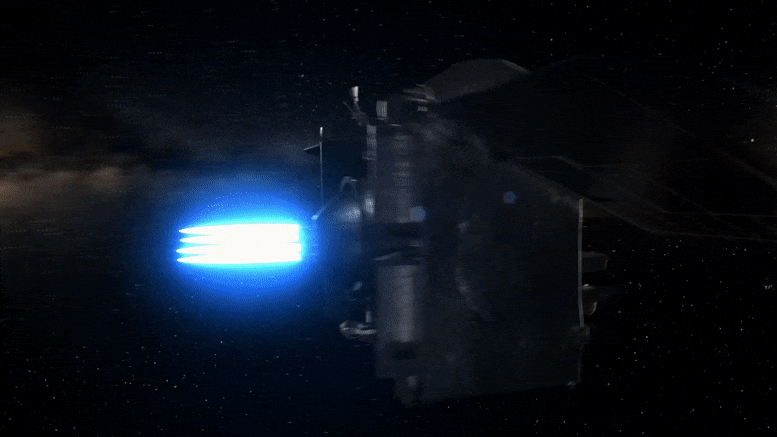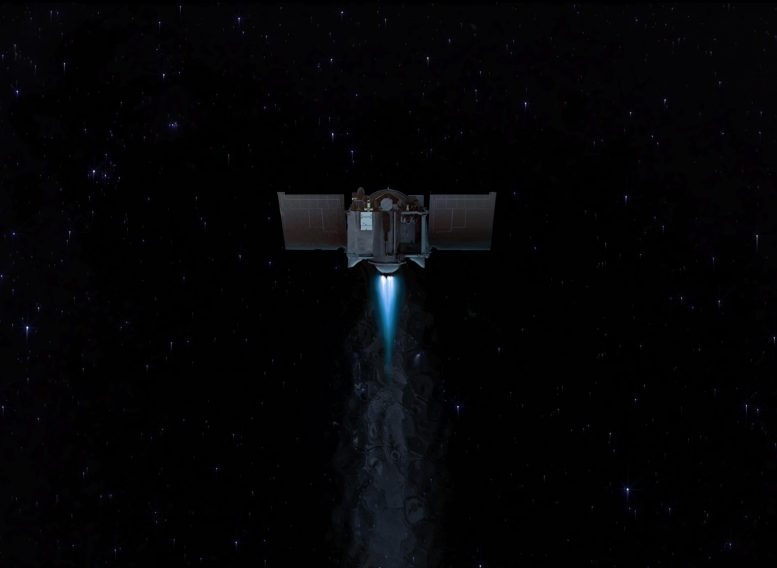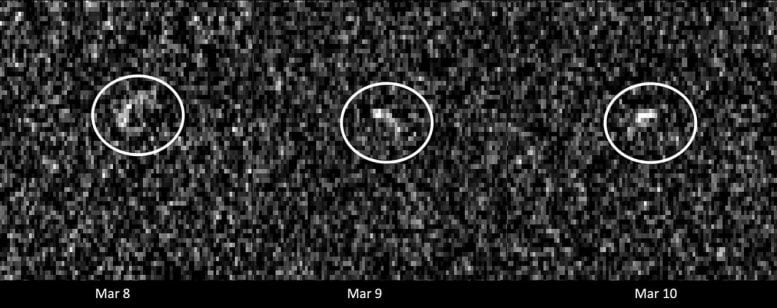By

OSIRIS-REx, now OSIRIS-APEX, is on a mission to study asteroid Apophis, utilizing its close approach to Earth in 2029. After successfully returning a sample from Bennu, the spacecraft will observe Apophis, an “S-type” asteroid, providing insights into solar system formation and planetary defense. Credit: NASA’s Goddard Space Flight Center
The former delivered the samplethe team proposed to dispatch it on a bonus mission to asteroid Apophiswith an expected arrival in April 2029. NASA agreedand OSIRIS-APEX (Origins, Spectral Interpretation, Resource Identification, and Security – Apophis Explorer) was born.

This illustration shows the OSIRIS-REx spacecraft departing asteroid Bennu to begin its two-year journey back to Earth. Credit: NASA/Goddard/University of Arizona
A Rare Opportunity at Apophis
After considering several destinations (including 
These images of asteroid Apophis were recorded by radio antennas at the Deep Space Network’s Goldstone complex in California and the Green Bank Telescope in West Virginia. The asteroid was 10.6 million miles (17 million kilometers) away, and each pixel has a resolution of 127 feet (38.75 meters). Credit: NASA/JPL-Caltech and NSF/AUI/GBO
“OSIRIS-APEX will study Apophis immediately after such a pass, allowing us to see how its surface changes by interacting with Earth’s gravity,” said Amy Simon, the mission’s project scientist based at NASA’s Goddard Space Flight Center in Greenbelt, Maryland.
Apophis’ close encounter with Earth will change the asteroid’s orbit and the length of its 30.6-hour day. The encounter also may cause quakes and landslides on the asteroid’s surface that could churn up material and uncover what lies beneath.
“The close approach is a great natural experiment,” said Dani Mendoza DellaGiustina, principal investigator for OSIRIS-APEX at the University of Arizona in Tucson. “We know that tidal forces and the accumulation of rubble pile material are foundational processes that could play a role in planet formation. They could inform how we got from debris in the early solar system to full-blown planets.”
Apophis represents more than just the opportunity to learn more about how solar systems and planets form: As it happens, most of the known potentially hazardous asteroids (those whose orbits come within 4.6 million miles of Earth) are also S-types. What the team learns about Apophis can inform planetary defense researcha top priority for NASA.
OSIRIS-APEX: Travel Itinerary
By April 2, 2029 – around two weeks before Apophis’ close encounter with Earth – OSIRIS-APEX’s cameras will begin taking images of the asteroid as the spacecraft catches up to it. Apophis will also be closely observed by Earth-based telescopes during this time. But in the hours after the close encounter, Apophis will appear too near the Sun in the sky to be observed by ground-based optical telescopes. This means any changes triggered by the close encounter will be best detected by the spacecraft.
This animation depicts the orbital trajectory of asteroid 99942 Apophis as it zooms safely past Earth on April 13, 2029. Earth’s gravity will slightly deflect the trajectory as the 1,100-foot-wide (340-meter-wide) near-Earth object comes within 20,000 miles (32,000 kilometers) of our planet’s surface. The dots are the many man-made satellites that orbit our planet. The motion has been speeded up 2,000 times. Credit: NASA/the first of six close Sun passes. Those near approaches, along with three gravity assists from Earth, will put OSIRIS-APEX on course to reach Apophis in April 2029.
What OSIRIS-APEX will discover about Apophis remains to be seen, but if the mission’s previous incarnation is any indication, surprising science lies ahead. “We learned a lot at Bennu, but now we’re armed with even more questions for our next target,” Simon said.
NASA’s Goddard Space Flight Center provides overall mission management, systems engineering, and the safety and mission assurance for OSIRIS-APEX. Dani Mendoza DellaGiustina of the University of Arizona, Tucson, is the principal investigator. The university leads the science team and the mission’s science observation planning and data processing. Lockheed Martin Space in Littleton, Colorado, built the spacecraft and provides flight operations. Goddard and KinetX Aerospace are responsible for navigating the OSIRIS-APEX spacecraft. International partnerships on this mission include the spacecraft’s laser altimeter instrument from CSA (the Canadian Space Agency) and science collaboration with






